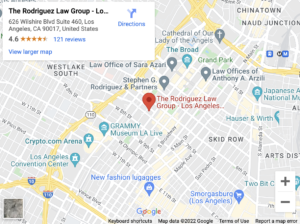Calif. Voters Retain Death Penalty; Approve Changes

Proposition 62 failed by a 54-46 margin, and Proposition 66 passed by a 51-49 count, so capital punishment is still legal in California and cases should move more quickly through the system.
Proposition 34, the most recent prior attempt to overturn the death penalty, failed by a similar margin in 2012. Had Proposition 62 passed, it would have replaced capital punishment with life sentences that had no possibility of parole, and also would have required such inmates to work and pay restitution to their victims. In addition to moral arguments, proponents also advanced legal and financial arguments, viz, capital punishment sentencing is inherently biased, advances in technology have rendered the death penalty dangerous and obsolete, and the system is much too costly to maintain.
Proposition 66 was almost too close to call for several days, but it passed by about 200,000 votes out of 10.4 million cast. Under the new law, habeas corpus petitions (death penalty appeals) must be filed in the district courts before working their way up the ladder, and this procedure should speed appeals. Trials may move faster as well, since Proposition 66 changes the qualifications for capital punishment defense attorneys and should expand the defense bar at this level, so cases get started sooner.
Like the vote itself, fundraising was almost a dead heat. Pro-death penalty advocates raised a little over $13 million, and the other side raised about $14 million.
Capital Punishment
In November 2016, voters in Oklahoma and Nebraska also decided to keep the death penalty; the margin was a little greater in the Cornhusker State and higher still in the Sooner State.
Nevertheless, it is obvious that people are deeply divided over this issue. The United States Supreme Court was sharply divided as well the last time it considered capital punishment, which was in 2015’s Glossip v. Gross.
On the surface, the case appeared to be about a technical dispute over the “drug cocktail” used in lethal injections.
However, the case wound up being much more, because these questions go to the very heart of the matter, which is whether or not the death penalty is “cruel and unusual punishment” and thereby violates the Eighth Amendment.
The 5-4 decision upheld the practical and philosophical aspects of lethal injection.
Oklahoma uses lethal injection in almost all cases, although electrocution and firing squads are also technically legal; likewise, in California, most executions are lethal injections.
Oklahoma, like most states, uses a three-drug combination: a powerful tranquilizer, a paralytic, and finally deadly potassium chloride. Sodium thiopental was once the tranquilizer-of-choice, because it renders the defendant completely unconscious.
Over the years, anti-death penalty advocates put pressure on pharmaceutical companies to stop selling sodium thiopental for this purpose, and so Oklahoma turned to midazolam.
In lower doses, midazolam is a surgical anesthetic, so it is not nearly as powerful as sodium thiopental or some similar medicines.
Oklahoma’s death row inmates filed a civil rights action under Section 1983, claiming that because of the weaker drug, defendants could feel almost the entire effect of the paralytic pancuronium bromide and the heart-stopping potassium chloride.
Writing for the majority, Justice Samuel Alito acknowledged that death row defendants might feel some pain, but that it was not enough to overturn the trial court’s finding and invalidate the process.
In a lengthy opinion, Justice Alito had some harsh words for the dissent, accusing them of resorting to “outlandish rhetoric” which “reveals the weakness of [their] legal arguments.”
That line was probably a shot at Justice Sonia Sotomayor, because her dissenting opinion compared a lethal injection with midazolam to “being burned at the stake.” She and three other Justices took issue with not only the method of execution used, but also with the whole idea of capital punishment.
Capital Offenses in The Golden State
About 900 felons are on California’s death row; nearly all of them were sentenced under the “special circumstances” provision in Penal Code 190.3. The definition is very broad and could conceivably include almost anything. In most cases, the prosecutor introduces victim impact statements and/or evidence that the defendant felt no remorse. The jury may also consider other acts of violence, even if the defendant was not convicted of said extraneous offenses, and evidence of prior felonies, even if the prior acts weren’t violent.
The prosecutor can only introduce evidence in these three areas. Conversely, the defendant can introduce almost any mitigating factors. Such evidence often includes:
- Age: Minors cannot be executed as a matter of law, and the human brain is not fully mature until at least age 25.
- Mental Handicap: Some jurors are sympathetic towards defendants with low IQs or ones that are diagnosed with a serious mental defect, like schizophrenia.
- Accomplice: For guilt/innocence purposes, the person who drives the getaway car is just as guilty as the person who pulls the trigger, but there is a difference for punishment purposes.
- Involuntary: Some jurors are also sympathetic if the defendant legitimately felt coerced into committing the crime, even if such duress is not a legal defense.
As in all other criminal cases, the defendant’s demeanor and appearance has a lot to do with how the jury acts, especially with regard to punishment.
The death penalty is here to stay, at least for now, and an aggressive lawyer can literally be the difference between life and death. If you have been charged with a serious crime such as murder, call us today to discuss your case. Mr. Rodriguez handles capital cases.
To learn more, call our Los Angeles criminal defense law firm at 213-995-6767 or visit our contact us page to send us an email.


